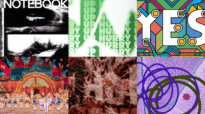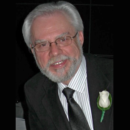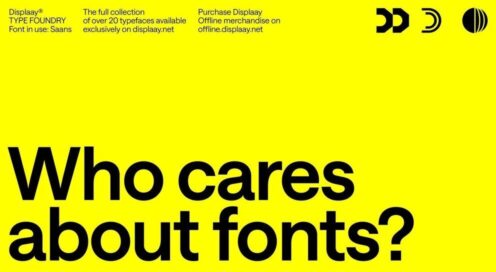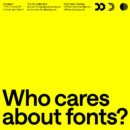Design+ Social Good Design
Interview with Kelly Small RGD, Intents & Purposes Inc.
In the latest instalment of the RGD's new Design+ series, Kelly Small RGD, Executive Creative Director at Grassriots Inc. and Author of The Conscious Creative, shares tips to be a more conscious creative with Amy Eaton RGD.
For those who haven’t read your book yet, how did you become interested in researching ethical and inclusive design?
Like any good project, it started with a crushing existential career crisis that forced me to start looking more critically at my work. Ok, maybe that isn’t like any good project, but that’s how mine began.
Despite my youth being informed by the likes of Naomi Klein and Adbusters magazine, I fell into the world of advertising, commercial design and digital marketing. It didn’t take long for the industry to catalyze a disconnection from my critiques of capitalism to suck me into a place where I simply wanted to belong; that meant the car, the house, the clothes and the values around consumption. It necessitated (or so I thought) that I park my politics and laugh off the daily microaggressions, homophobia and sexual harassment. To use a term I probably shouldn't (I never claimed to be perfect), I “drank the kool-aid” and bought into the reductive ideas and harmful stereotypes that I was pushing out into the world, sometimes on a massive scale, reaching millions of people in a single campaign or experience. Following over a decade of this daily dissonance with the values that I still held but were buried deep, I became increasingly aware of that which I was complicit in — simply by doing my job. The awareness turned into a glaring clarity that, eventually, I could no longer ignore.
What are the problems you see with the design industry as a whole?
When I started in this industry, only 3% of creative directors were women. That number has grown to a not whopping ~12%. Of course, that research didn’t account for gender diversity or percentages of racialized or queer people in creative leadership positions, but I’m sure we can all agree that the industry continues to struggle with diversity, equity and inclusion across all levels of work. I cite studies in The Conscious Creative about how it is statistically proven that folks whose lives have been marked by systemic and interpersonal discrimination (that usually means women and gender diverse folks, racialized peoples and those who are disabled) are many times more likely to bring a social justice lens to their work. This is evidenced in design and tech, where studies looking at the core missions of startups have shown that it is purpose beyond the bottom line (think social impact or climate justice) that disproportionately drives companies run by women and people from underrepresented groups.
All this to say, can you imagine the impact of a more diverse global design industry, where formerly marginalized folks have more decision making power? Drive the mission of organizations? Determine the creative concepts for design interventions, experience design and campaigns for big brands? This is just one area of many that I think the industry needs to work much faster at resolving.
Have you seen any positive change in the industry in the past few years?
Yes. Heck yes. Since I started in this business, I have seen significant change as it relates to more diverse and equitable hiring practices, an increased industry-wide awareness of our capacity for impact and why ethics in tech and design are so important and a much higher number of design(and adjacent) companies committing to becoming B Corps or simply bringing a purpose deeper than the bottom line and good design to the table. This is, of course, shared through my lens of privilege as a white, housed and employed person in a leadership position. I don’t know if everyone would agree with my points above and so I always want to be careful about making absolute statements. I think things have improved for some people but not all — progress is happening, but the work is not done. Like I say in the book, ethical design is an ongoing practice and never a destination.
What do you think we should focus on improving this year?
Take action. Action that makes sense in the context of each of our individual work-lives. Action that can be practiced sustainably over time. Designers have spent over a century crafting manifestos for a different world with, arguably, less action being taken to realize the messages those texts espouse. The Conscious Creative is intentionally compiled into over 100 actions for ethical practice so that each of us might discover the incremental shifts we can make to our careers in order to build a practice that, over time and collectively, will contribute to dismantling oppressive systems of power. Let’s start small and be gentle and compassionate with ourselves as we learn and make mistakes. Let’s avoid the impossible expectation that we can solve the world’s wicked problems, but instead discover opportunities for impact in an actionable way where we can.
Do you have any advice on how creatives can approach projects that feel ethically ambiguous?
I am going to answer this question with a quote from the book GOOD by Lucienne Roberts:
“Isn't it better not to walk away from jobs on ethical grounds, but to ask if there’s some way you can have influence—the views won’t be challenged if you’re not there.”
I would argue that nearly every project has some ethical ambiguity. If we really stop to think about the ramifications of our work, the tools we use, the clients we have, the platforms we house our creative on, the vendors we partner with, etc, then we could fall down that rabbit hole pretty fiercely. One of the first actions in The Conscious Creative is to “Pre-define your hard no”. If we predetermine what we will and will not work on, we’ll be better equipped to make a quick decision in the moment we’re hit with a brief that sends our alarm bells off. If we’re going to walk away and advocate against the work — great. If we’re going to stick around and figure out how to reduce harm, subvert from within or simply carry out the job because sometimes that’s just what we have to do — also great. Ethical perfection is illusory. Let’s practice ethical work courageously, but without compromising our jobs or well-being unless we truly understand the cost/benefit.
What steps can designers take to broaden their perspective to be more inclusive when they take on a new project?
Read The Conscious Creative. Become a “media tourist” and consume literature, follow socialaccounts, watch films and TV from folks who aren’t like you.
Make sure the teams you’re working on reflect the diverse makeup of Canadian society.
Remember: “Nothing about us without us”
As designers starting out on their own journey to becoming more ethical creatives, what are a few key things they should consider?
Be kind to yourself. Start small. Stay humble. Ask questions. Respect difference. Use inclusive language. Be accountable for your mistakes — you will make them and that’s ok.
Do you have any examples of specific language that is exclusionary that we should be mindful of?
In The Conscious Creative in the Social Actions section, there is a fairly comprehensive listing of the sorts of language to avoid and unlearn. For the sake of brevity, here’s a starting point that I have a personal affinity for: When meeting new folks, say, in an interview or client-setting, be sure to introduce yourself along with your pronouns and then kindly ask for others to do the same. The pro tip here is that we can’t assume to know a person’s pronouns or gender identity simply by looking at them.
Our company does simple self-intros as follows: “Hi, I’m Kelly Small. I’m the executive creative director at Grassriots and I go by they/them.” Easy, right? We also include our pronouns in email signatures, bios and on LinkedIn. It’s an easy step to being an ally to the growing communities of people whose identities live beyond the gender binary.
Remember when it was standard to default to he/him pronouns for explanatory examples, or each time we spoke about a fictional authority figure? This is how I was taught in my elementary school English classes. When I asked “why” the response was always “It’s just how things are done”. Consider that every day is an opportunity to gently dismantle “the way things are done” in order to establish progressive, equitable working conditions where everyone feels included.
One last fun question, if you were in a font family, what style would you be?
Oh, good question! I’d be a variable font for maximum opportunities to shapeshift, but I would mostly live as an ultra-bold; I’m learning that it’s ok to take up space and have a voice as it relates to my goals for the industry.

















